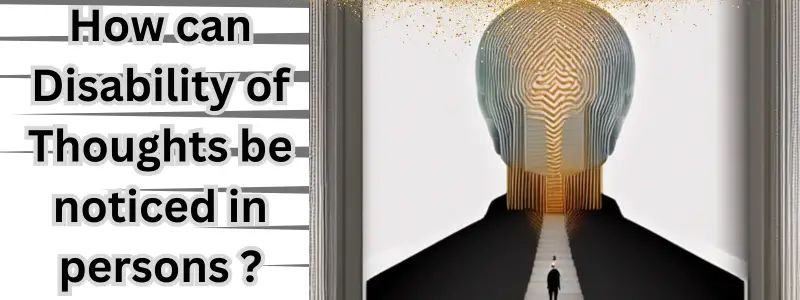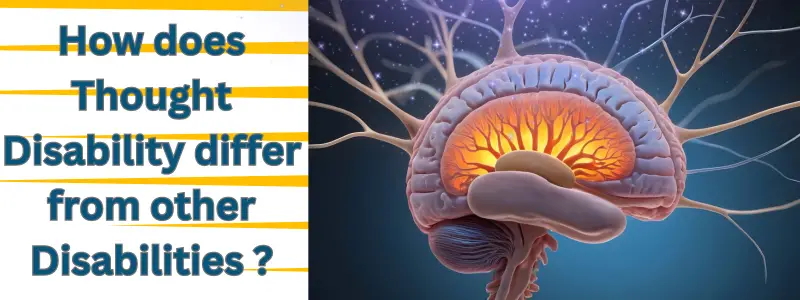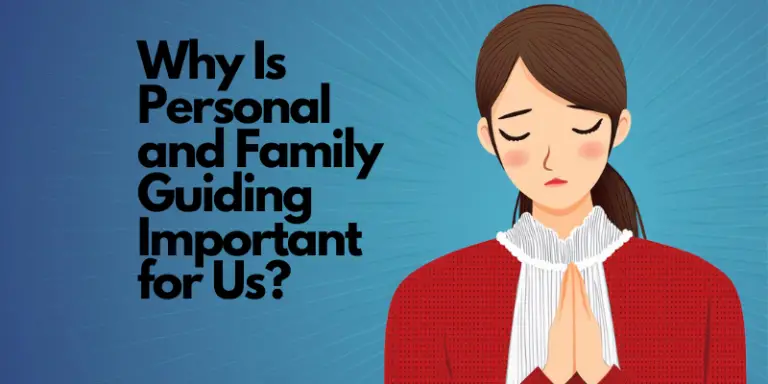How to Resolve Disability of Thoughts? Some Secrets !
Creating the “disability of thoughts” requires a multi-disciplinary strategy that includes therapy, medication, and lifestyle changes. By learning to alter negative thought patterns with cognitive-behavioral therapy and other therapies, people can have a more positive outlook on life.
Creating a supportive environment at work and home, together with lifestyle adjustments like consistent exercise, a balanced diet, and sufficient rest can assist manage this kind of disability. Despite difficulties associated with the “disability of thoughts,” people can work for a healthy and fulfilling life by realizing the significant relationship between inner personality, thought patterns, and mental health.
How can Disability of Thoughts be noticed in persons?

“Disability of thoughts” can take many different forms, affecting one’s ability for concentration, clear thinking, and decision-making. When trying to comprehend information, people with this disorder may experience trouble focusing, lack of memory, or confusion. They may have trouble organizing concepts in order, expressing themselves clearly, or making decisions. This may affect their daily routines by causing them to get frustrated, stressed, or overwhelmed. Some may notice a decline in their capacity for managing problems or an inability to finish tasks.
What are some common Causes of Thought Disability?
Thought-related diseases can be caused by a variety of common factors some of which are related to our attitudes and the role that social media plays in our lives. Two prevalent mental health conditions that can make it difficult for people to concentrate or think are anxiety and depression.
Stressful life experiences can also impact brain function, causing disorientation or trouble processing information. Social media can also be a factor; repeated exposure to well-chosen photos and unfavorable news can lead to anxiety or feelings of inadequacy, which impair our capacity for optimistic thought. Excessive usage of social media can eventually shorten our attention span and make it more difficult to concentrate.
How do Thought Disability differ from other Disabilities?

“Disability of thoughts“ is distinct from other mental disorders that may be more related to emotional or behavioral problems since it impacts a person’s capacity to concentrate, think effectively, and judgments. Persons with this kind of disability may have difficulties focusing, remembering things, or structuring their thoughts, which can make going about regular activities and interacting with others difficult. It matters greatly how we understand and deal with the “disability of thoughts“. While a negative attitude could generate stigma and discourage people from obtaining the help they need, a positive attitude can lead to supportive situations where people feel encouraged to seek therapy or adjustments.
How Does Society affect People with Thought Disability?
Social environments have a significant impact on those with “disability of thoughts.” A stigmatizing and unfair mindset against those who experience mental health issues might result from society’s negative attitudes about them. Those who have this condition may experience discrimination or exclusion from employment and social opportunities. This may accelerate their stress levels and make it more difficult for them to handle their problems. However, society may promote an atmosphere where people with a “disability of thoughts” feel appreciated and welcomed if it maintains a constructive and encouraging stance. Social plans aimed at enhancing their well-being, accessible education, and inclusive workplaces are some examples of this support.
What do Some Therapies Relate to Thought Disability?

Treatments for “disability of thoughts” are designed to improve mental skills such as concentration, memory, and problem-solving. A popular method for assisting people in identifying and changing harmful thought patterns and promoting positive thought patterns is cognitive-behavioral therapy (CBT). Occupational therapy can help people manage daily activities and organize tasks.
Speech therapy may benefit those who have trouble with communication. Medications, when necessary, can help manage underlying conditions like depression or anxiety, which often affect thought processes. A positive attitude towards these therapies is crucial. When we view them as valuable tools for improvement, it motivates individuals with “disability of thoughts” to stay committed to their treatment plans. Supportive families and communities that encourage therapy can create an environment where individuals feel empowered to overcome the challenges associated with “disability of thoughts.”
Also Read : What is Real Thought Transformation ?







